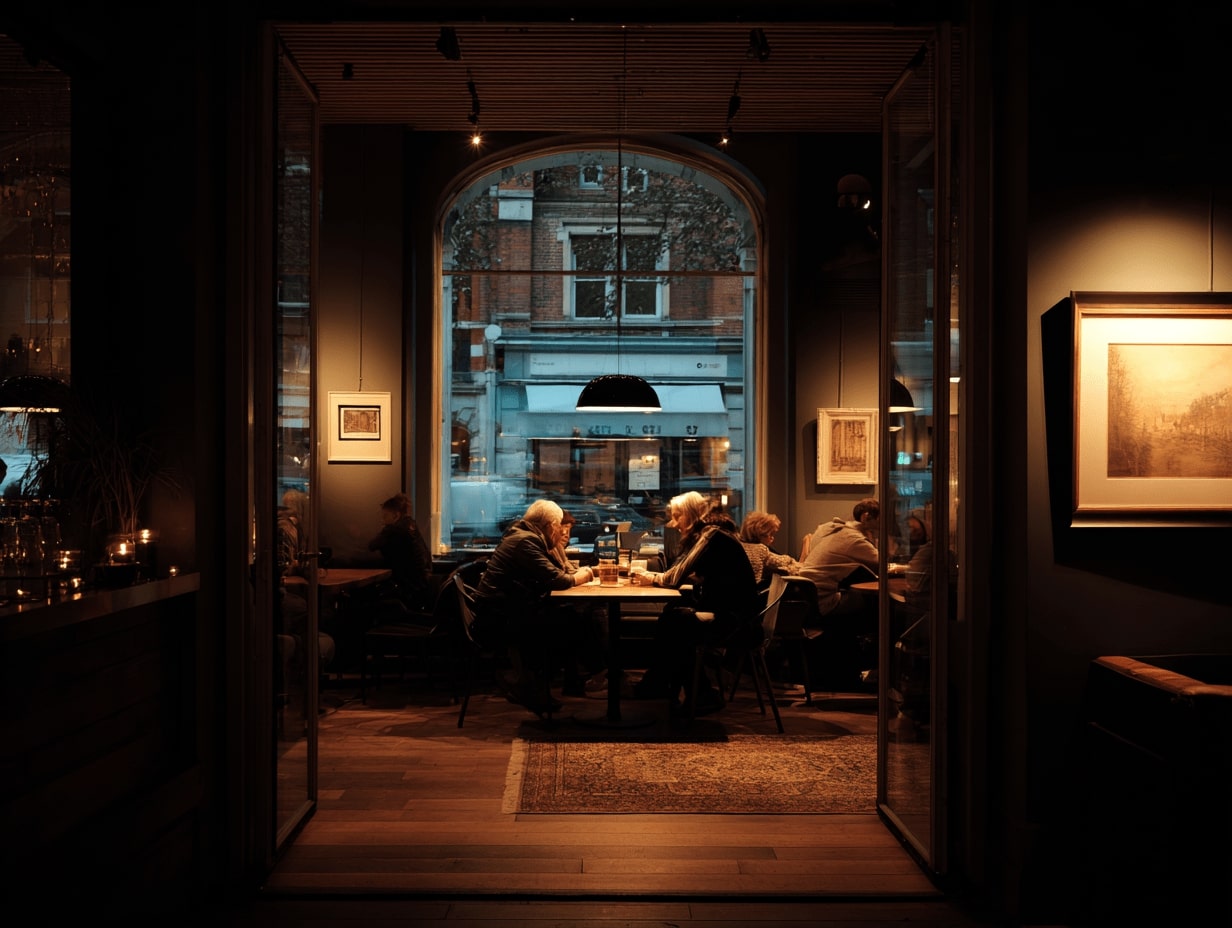- Home
- Articles
- Architectural Portfolio
- Architectral Presentation
- Inspirational Stories
- Architecture News
- Visualization
- BIM Industry
- Facade Design
- Parametric Design
- Career
- Landscape Architecture
- Construction
- Artificial Intelligence
- Sketching
- Design Softwares
- Diagrams
- Writing
- Architectural Tips
- Sustainability
- Courses
- Concept
- Technology
- History & Heritage
- Future of Architecture
- Guides & How-To
- Art & Culture
- Projects
- Interior Design
- Competitions
- Jobs
- Store
- Tools
- More
- Home
- Articles
- Architectural Portfolio
- Architectral Presentation
- Inspirational Stories
- Architecture News
- Visualization
- BIM Industry
- Facade Design
- Parametric Design
- Career
- Landscape Architecture
- Construction
- Artificial Intelligence
- Sketching
- Design Softwares
- Diagrams
- Writing
- Architectural Tips
- Sustainability
- Courses
- Concept
- Technology
- History & Heritage
- Future of Architecture
- Guides & How-To
- Art & Culture
- Projects
- Interior Design
- Competitions
- Jobs
- Store
- Tools
- More
Contrasting Minimalist and Maximalist Interior Design: Which Suits You Best?
Explore the beauty and principles of both minimalist and maximalist interior designs in this insightful article. Uncover how these designs evolved based on societal trends and technological advancements, and the effective balance that reflects personal style for captivating aesthetics. Learn how to fuse minimalism's serenity with maximalism's vibrancy for spaces.

In the vast world of interior design, two styles often stand out for their distinct approach to space and aesthetics: minimalist and maximalist. But how do these styles impact our daily lives, and what do they say about us? That’s what we’re here to explore.
According to a recent survey, 47% of respondents crave a soft, relaxing atmosphere in their homes, pointing towards a preference for minimalist design. This style, characterized by less clutter and fewer accents, fosters serenity, making it an oasis from the hustle and bustle of everyday life. Conversely, a smaller 29.5% find comfort in modern and sleek finishes, suggesting an inclination towards maximalist design.
Join us as we delve deeper into these two contrasting styles, their influence on personalization and comfort, and how they shape our living spaces.

Table of Contents
ToggleDefining Minimalism in Interior Design
Drilling down more into the minimalist part of the design spectrum, we investigate its essence. We can characterize Minimalism with its clean lines, clutter-free spaces, and its emphasis on functionality. This section dives deeper into the defining characteristics of minimalism, anchoring on the key principles that guide its approach to interior design.
Key Principles of Minimalist Interiors
In minimalist interior design, the philosophy revolves around the principle of simplicity. It aims to strip away unnecessary elements and maintain a clean, spacious environment. Here are some key principles:
- Simplicity: Observing minimalist interiors, note the usage of simple forms, elements, and colors that adhere to functionality. Consider an open floor plan, for instance. It maximizes the functionality of the space without any obstructive and unnecessary elements.
- Functionality: Every piece of furniture or decor in a minimalist design serves a specific purpose. An example might be dual-purpose furniture like a coffee table with storage underneath, marrying design and utility.
- Clean lines and geometric shapes: Minimalist design often features clean lines and geometric shapes which bring order and harmony to the space. A rectangular bookshelf or a round dining table, for instance, solidifies this concept, creating a structured look in the space.
- Neutral Color Palette: Minimalist interiors primarily use a neutral color palette. Often, you’ll find hues such as white, grey, or beige for walls, furniture, and accessories. A dove-gray wall with white trims, for example, is one of the staples in minimalist color schemes.
The Appeal of Less is More
Less truly is more for some when it comes to interior design. The appeal of minimalism lies in its serenity, the calm it brings to a room through uniformity, simple forms, and a monochromatic color palette. The less cluttered and busy a space is, the more peaceful and tranquil it feels. Imagine entering a room with a neutral color palette, simple furniture, and minimal decor, without any excessive ornamentation—such a space exudes a calm ambience that provides psychological relief, thus, attracting many people towards the “Less is More” ethos.
Moreover, minimalism lets individual elements shine. The use of negative space brings attention to the few carefully chosen objects or furniture pieces that reside within, allowing them to stand out. For instance, a single dramatic artwork on a white wall becomes a stunning focal point in the room.
Also, minimalism demands fewer resources. You invest in fewer, high-quality pieces that are both functional and aesthetically pleasing. A small collection of timeless furniture, for example, can reduce both waste and expenses.
Minimalism’s draw hinges on tranquility, singular beauty, and resource efficiency.

Exploring Maximalist Interior Design
Transitioning from the tranquility that comes with minimalist design, we now embark on an exploration of the maximalist interior design style. A complete sensory delight, the maximalist design approach is dense with various colors, textures, and patterns all harmoniously melded into a holistic spectacle. Fuelled by individuality and personal expression, it pulsates with energy, warmth, and an unabashed exuberance.
Understanding the Maximalist Aesthetic
Let’s delve into the aesthetics of maximalism. This interior design approach encapsulates a vibrant mixture of textures, patterns, and bold colors. It’s characterized by an abundance of decorative elements – an eclectic mix indeed, one that creates a visually stimulating environment. And where minimalism removes, maximalism adds, but with intention and rule-breaking creativity.
Underneath the maximalist aesthetic lies a deep attachment to numerous objects, each with a unique story or sentimental value. It’s not about arbitrary accumulation. It’s about tastefully arranging and displaying pieces that resonate emotionally. Maximalism sees shopping as a form of expression, the process of finding unique pieces that embody the individual’s personality, and it views each item as more than just an object, attributing specific meaning and purpose to each element incorporated.

The Joy of More is More
Embracing the maximalist design philosophy is tantamount to indulging in the joy that more can indeed be more. Maximalist interiors radiate a lively energy that lifts your spirits and prompts inspiration. The innate emotional quality evident in maximalist interiors requires you to draw inspiration from what you love.
This style pushes boundaries and challenges convention, inciting an emotional response. Irrespective of your space’s size or location, this style is all about enriching your surroundings with elements that amplify happiness, glamor, and comfort. It’s about creating a personal sanctuary, an inviting and comfortable retreat that sparks conversations and oozes personality and charm.
However, while maximalism celebrates abundance, it does not advocate for clutter. Managing clutter and maintaining visual coherence can pose challenges in maximalist design, making it a deliberate, thoughtful journey of design.
Minimalist vs Maximalist: The Main Differences
Diving deeper into the intriguing world of interior styles, we get to compare and contrast Minimalist design and Maximalist design. Understanding these design styles’ main differences can impact the overall ambiance and functionality of your space. We contrast these styles based on three critical factors – color schemes and palettes, space utilization, and decor choices for personal expression.

Color Schemes and Palettes
In Minimalist designs, the color palettes are generally neutral and unassuming. Predominantly, colors like white, beige, and grey take center stage in these designs to promote serenity and coherence. It’s common to see these calming hues paired with subtle contrasting accents for added depth and interest. Unlike Minimalism’s quieter palettes, Maximalist designs display a visual feast of vibrant, bold color choices. Here, color schemes are rich and expressive; they convey the intended mood and guide the narrative of the space.
Use of Space and Functionality
Next, let’s consider the organization and application of space. Minimalist interiors are a testament to the traditional “less is more” philosophy. Every element in these spaces has a clear function and purpose, and there’s an undeniable emphasis on decluttering and serenity. On the flip side, Maximalist interiors celebrate a bountiful approach to space, layering numerous elements for increased functionality. A Maximalist room isn’t an overwhelming mess, but rather an intentional assembling of many distinct items that merge to form a single, harmonious space.
Decor and Personal Expression
Lastly, the ways Minimalist and Maximalist designs facilitate personal expression differ significantly. Minimalist decor focuses on quality over quantity, showcasing carefully selected statement pieces that preserve the general simplicity of the space. In contrast, Maximalist decor inclines towards creative abundance: varied patterns, textures, and unique objects that reflect the owner’s individuality and passion. It’s an eclectic, visual-rich style, weaving an unfolding narrative around a room.
Combining Minimalism and Maximalism
While the simplicity of minimalism and the vibrancy of maximalism often stand at opposing ends of the design spectrum, finding a balance that reflects personal style can lead to compelling, unique aesthetics. Blending the two styles successfully demands an understanding of their principles, and a judicious application of their key elements. Here, we delve into how to find the middle ground and offer tips to effectively balance both styles.

Finding the Middle Ground in Design
Considered a brave and eclectic mix, the combination of minimalist and maximalist design can result in a style that’s visually engaging. The middle ground embraces the simplicity of minimalism and the extravagance of maximalism, which allows for a curated balance that echoes individual personality. Gideon Mendelson, founder of Mendelson Group, successfully utilizes this approach. His designs are elegant, refined, and surprising, with playful bursts of maximalism. The mix of serenity from minimalist elements and drama from maximalist details helps to create interiors that are unique, personal, and full of character.
Tips for Balancing Both Styles
To achieve this combination, the layout must be carefully planned. Begin with a minimalist base – a neutral color scheme, minimal furniture, and clean lines. Gradually integrate maximalist features – bold colors, eclectic accessories, layered patterns – to infuse personality and visual interest. It’s essential not to overdo the maximalist elements, otherwise, you risk overwhelming the minimalist base.
Quality over quantity is another principle to maintain, especially when incorporating maximalist elements, as it ensures the space stays clutter-free and maintains a harmonious visual flow. Remember, the goal is to strike a balance that reflects your style preferences, enabling you to blend simplicity with complexity, tranquility with vibrancy, and create a living space that is uniquely yours.

Conclusion
Evolutionarily, humans are inherently attuned to vibrant colors, making the maximalist interior design appealing. Let’s not forget our nature-prescribed love for saturated colors which contribute to stimulating our vision. In contrast, animals like dogs and cats have monochromatic vision, seeing in shades of gray or just blue and yellow. Certainly, we can take cues from this knowledge when designing our living spaces – spaces that cater to human vision should invite colors that stimulate it.
Drawing from our history, economic crises resulted in the rise of architects like Adolf Loos, who advocated stripping ornamentation from buildings, paving the way for the modernism we know today and, interestingly, aligning with minimalist principles.
Our architectural and design expressions constantly adapt, leveled by climatic, economic, and cultural changes. Simple styles, akin to minimalist design principles, have leant toward rectangular shapes and a toned-down color palette. On the other side of the spectrum, complex styles gravitate towards an abundance of colors and shapes found in nature—fundamental traits of maximalist design.
With technology and manufacturing processes evolving at an unprecedented pace, we witness shifts in style trends faster than ever before. While building styles might not reflect these changes externally, interior design styles have adapted rapidly, changing annually. Witnessing these changes is intriguing, and it’s precisely why the juxtaposition between minimalist and maximalist design isn’t just fascinating, but inevitable. We must strike a balance, amalgamating the serenity of minimalistic design with the vivacity of the maximalist, thus creating spaces which satisfy our innate longing for both simplicity and complexity.
Submit your architectural projects
Follow these steps for submission your project. Submission FormLatest Posts
The Revival of Chunky Fiber Crafts in Modern Interior Design
Contemporary interior architecture has shifted away from hard minimalism. After a decade...
What Have Been the Biggest Interior Design Trends of 2025 – And Are They Here to Stay?
Differentiating between timeless and fleeting designs? This talent is what separates great...
Minimalist Luxury Interior Design for Modern Dubai Homes
Minimalist luxury is quickly becoming the signature look in many Dubai homes...
Where Coffee Meets Design in Captivating Cafés
Coffee shop design that captivates: a practical guide to lighting, acoustics, flow,...












Leave a comment